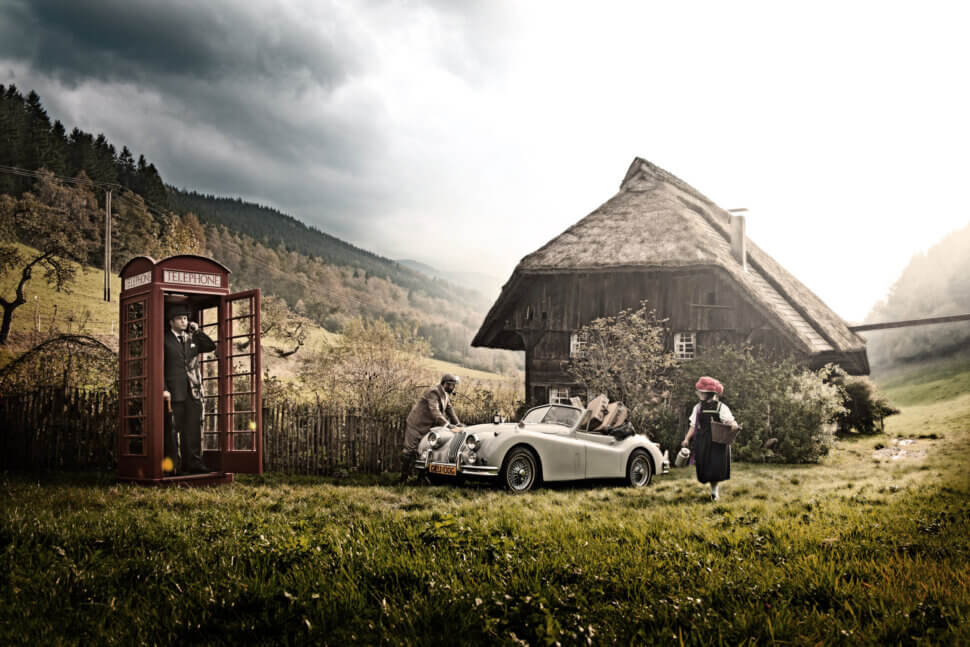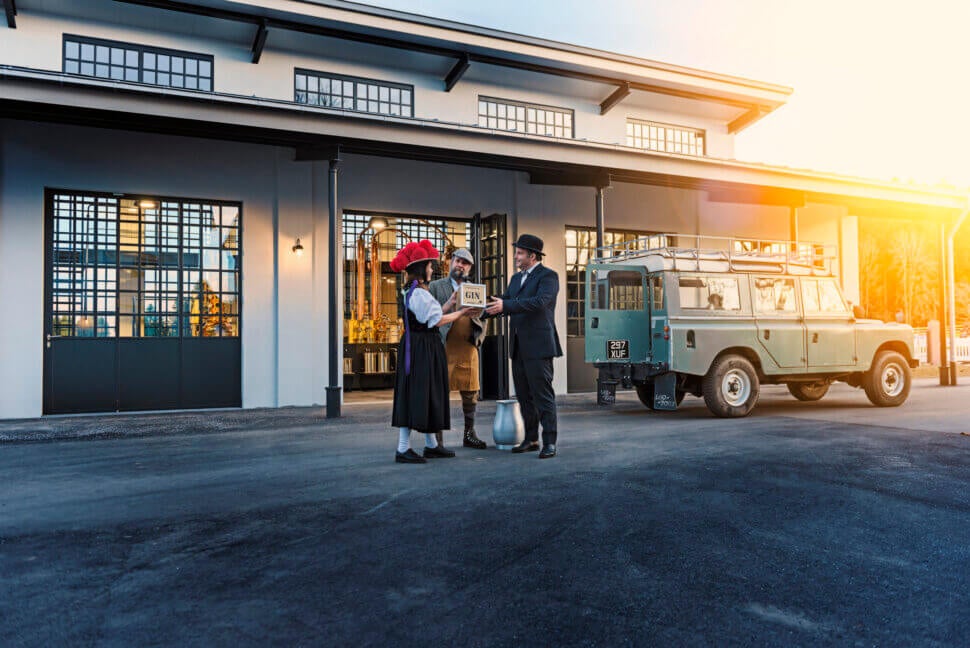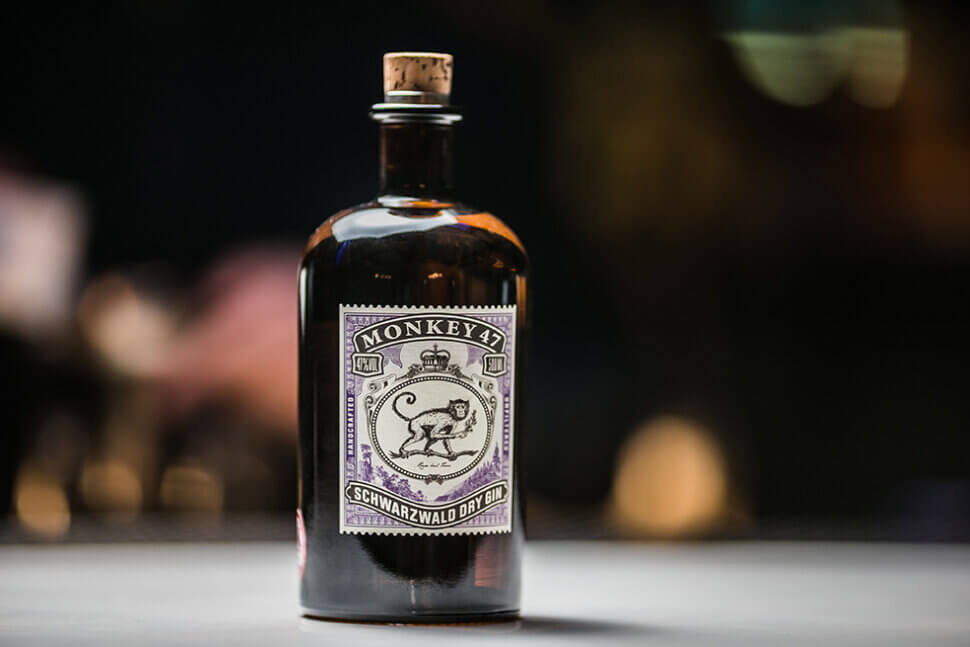The Gin of 47 Parts: An Interview with Monkey 47
April 9, 2019
Monkey 47 is a gin unlike any other. It consists of 47 different botanicals, including angelica root, acacia flowers, bramble leaves, lingonberries and spruce shoots all sourced from the Black Forest as well as juniper berries from the Mediterranean sea (which are known to be more aromatic as they receive more sun than their Tuscan and German counterparts), each ingredient carefully chosen to complement the others.
We spoke to Alexander Stein, founder of Black Forest Distillers, about his unique gin and the inspiration behind it.
WE HEAR THAT YOU’VE RECENTLY COMPLETED YOUR NEW DISTILLERY IN THE BLACK FOREST. WHY IS THIS LOCATION IMPORTANT TO YOU?
Schwarzwald is where it all began. Right from the outset our plan was to bring the production of Monkey 47 back home to its place of origin. Several years ago we bought an old farm nestled in a collection of farmsteads known as 24 Höfe located in the northern part of the Black Forest. As of December 2015 (and after two years of reconstruction), we are pleased to call the Wild Monkey Distillery our new home.
The choice of location was a deliberate one. Nowhere else in the world will you find the wealth of distilling expertise and centuries of experience that there is in Southern Germany. This is where the world’s most renowned distillers work, and where traditional coppersmiths build the best distilleries. Access to fresh ingredients of the highest quality is virtually unlimited, and the Black Forest water sourced from deep sandstone springs is one of the softest and mildest waters in Europe. Home is where your heart is…

WHY DID YOU DECIDE TO MOVE INTO A NEW DISTILLERY?
Our desire to build a new distillery is more of a romantic nature. It’s not so much about enhancing capacity – quite the contrary as we are downsizing – it’s about a constant thrive for quality while also creating an environment that allows us to better share insights into the way we work.
Simply put: we wanted to create some sort of Cathedral of Distillation. Together with the famous coppersmith Arnold Holstein, we developed a one-of-a-kind distilling apparatus. Entirely handmade, its development and production took more than two years in accordance with parameters set in terms of quality and experience.
In keeping with the Swabian principle of less is more, the size of the ‘still was not increased – on the contrary, it was reduced from 150 to 100 litres in order to further optimise the surface ratio of copper and the macerate. The basic methods however remain the same, and so along with the classic techniques of maceration and distillation, the principle of percolation (steam extraction) is still used, though in a slightly different manner.
The repositioning of the baskets in connection with the completely redeveloped distilling apparatus enables us to focus on isolating just the right amounts of rather volatile aromas, bringing them individually to the fore and carefully combining them to produce the perfect blend that characterises the harmonious taste of Monkey 47.
And, last but not least, and to be perfectly honest: how often do you get the opportunity to build your own distillery?

HOW IMPORTANT ARE THE INGREDIENTS IN GIN?Our definition of ingredients might deviate from common standards. Somebody once said: “There is truth in wine, but you never see it listed in the ingredients on the label.” Quality is made by quality through the whole value chain, and the discipline to follow only one goal – to produce the best product possible.Dedicated and quality obsessed people, high-grade and meticulously processed botanicals, selecting the right neutral alcohol for the basis, maceration that is not achieved by cold extraction but takes place at 30–40 degrees Celsius, gentle distillation and percolation, storage in earthenware containers and, most importantly of all, marrying it with exceptional quality spring water and forgoing cooling treatment and filtration: although this is only a selection, these are all essential ingredients when producing a high-quality gin.HOW WERE THE 47 INGREDIENTS IN MONKEY 47 CHOSEN?Good question. Indeed the key challenge was the content itself. There were only rudimentary written records and no original recipe from Montgomery Collins, just the descriptions and stories told by eye witnesses and a few key facts, such as the use of spruce shoots, classic gin ingredients and cranberries.Basically, we had to start from scratch. Like a perfumier, we tried to design particular aroma architecture by composing different layers of fragrances and taste. After selecting the 47 different ingredients, we analysed the proportions in over 120 test distillations. Finally after two years of development, we chose the one recipe that we thought embodied the ideal gin.WHAT INFLUENCE DO THE INGREDIENTS HAVE ON THE SMELL AND TASTE OF THE GIN? DO EACH OF THE INGREDIENTS PLAY A ROLE?A good third of the ingredients of Monkey 47 come from the Black Forest and are definitely NOT what one would assume to be typical for gin: lingonberries, spruce tips, sloes and elderflower blossoms, to name a few. In total, we use 47 handpicked ingredients, from which 60% are dominant in by sensory means while the remaining 40% are creating a certain “je ne sais quoi” in complexity.HOW AND WHY DID YOU DECIDE ON THE PHARMACY STYLE BOTTLE?The brown glass bottles were developed especially to recreate the traditional design of an old chemist’s bottle for a good reason. Despite its sophisticated appearance, brown glass is protecting volatile and fragile aromas from UV light. This particular glass is another ingredient of Monkey 47 standards.

